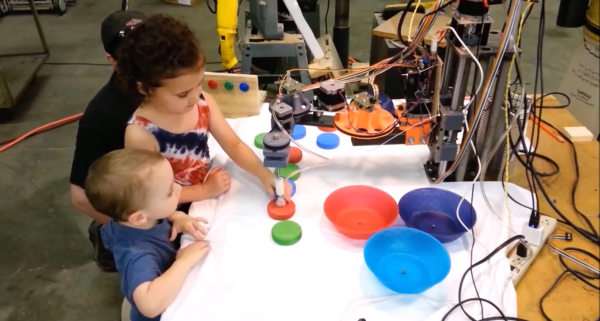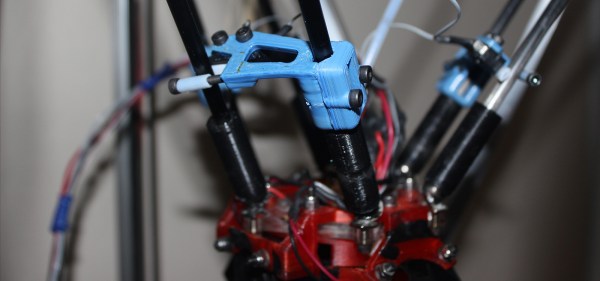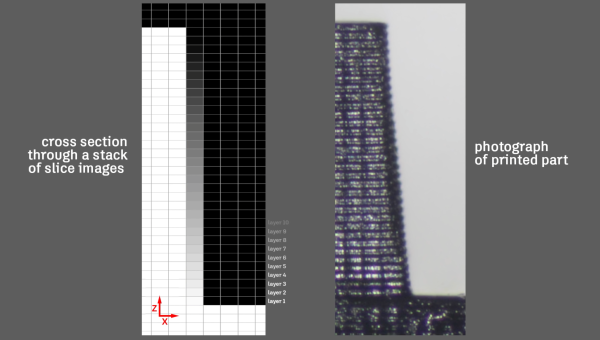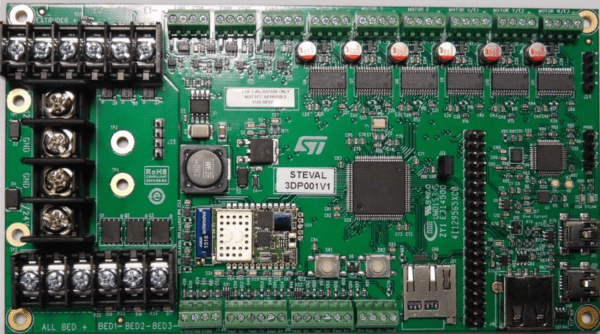A SCARA (Selective Compliance Assembly Robot Arm) is a type of articulated robot arm first developed in the early ’80s for use in industrial assembly and production applications. All robotics designs have their strengths and their weaknesses, and the SCARA layout was designed to be rigid in the Z axis, while allowing for flexibility in the X and Y axes. This design lends itself well to tasks where quick and flexible horizontal movement is needed, but vertical strength and rigidity is also necessary.
This is in contrast to other designs, such as fully articulated arms (which need to rotate to reach into tight spots) and cartesian overhead-gantry types (like in a CNC mill), which require a lot of rigidity in every axis. SCARA robots are particularly useful for pick-and-place tasks, as well as a wide range of fabrication jobs that aren’t subjected to the stress of side-loading, like plasma cutting or welding. Unfortunately, industrial-quality SCARA arms aren’t exactly cheap or readily available to the hobbyist; but, that might just be changing soon with the Creo Arm.
Continue reading “Creo Arm Might Be The SCARA You’re Looking For”

















